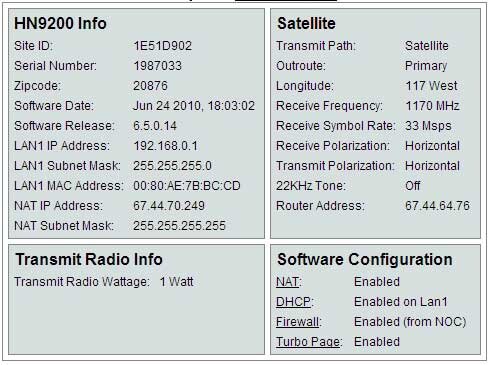Here is a reply I received from my distributor to my question about 9200s:

From a HughesNet Rep:These are AMC 15 modems - used in the East in areas that Hughes is using the AMC-15 satellite for fulfillment orders - ALL DEALERS ORDERS IN THE US ARE ON SPACEWAY and use the 9000
I noticed some Mexican retailer/distributors are offering 9200-based systems. So must assume they are HughesNet-approved VARs/Shared Hub operators in Mexico operating on a Ku Hub. The manual for the 9200 contained a screen shot showing SatMex 5 listed in a System Info page example.HN9200 & HN9400 --First, they're both dual band modems, with the 9400 having some additional features & capabilities. Both are targeted at enterprise use in situations requiring high QoS, multi applications, high speeds, VLAN tagging ,etc. The exclusive market so far is hub operators, with most of the sales taking place offshore and outside US.
Neither of these modems will work with the HX shared service hubs Hughes offers in N. America. The hubs have to be configured to support these modems, and our N. American Hubs are not equipped to support them. Frankly, there's no reason to run a dual band modem when a single band (i.e. Ku modem) such as an HX-50, HX-200 will suffice and at a lower price point. The only Ka band we run in N. America is Spaceway, which is only US and uses its own modems, so a dual band modem doesn't help much unless you're using both Ka & Ku capacity, and further that the hubs can support the Hughes modems.
If you have potential customers showing up with these modems, in all likelihood they procured them through a private hub operator, or alternatively grey market. Regardless, these modems won't work on our N. American HX constellation and are therefore useless. That said, even if our shared hubs were modified to support, you'd still run into issues with encryption keys as these would have been issued to the hub operator when they procured the HN modems, and it's highly unlikely that they'll be willing to enable the modems when they no longer have the customer.
So, the short answer is that the customer has a nice paperweight, unless they can work a deal with the original hub operator to take the unit back or reassign it.


